Durability and Life Cycle Testing at MGA Querétaro: Advancing Component Reliability in Latin America
Nov 17, 2025
.jpg)
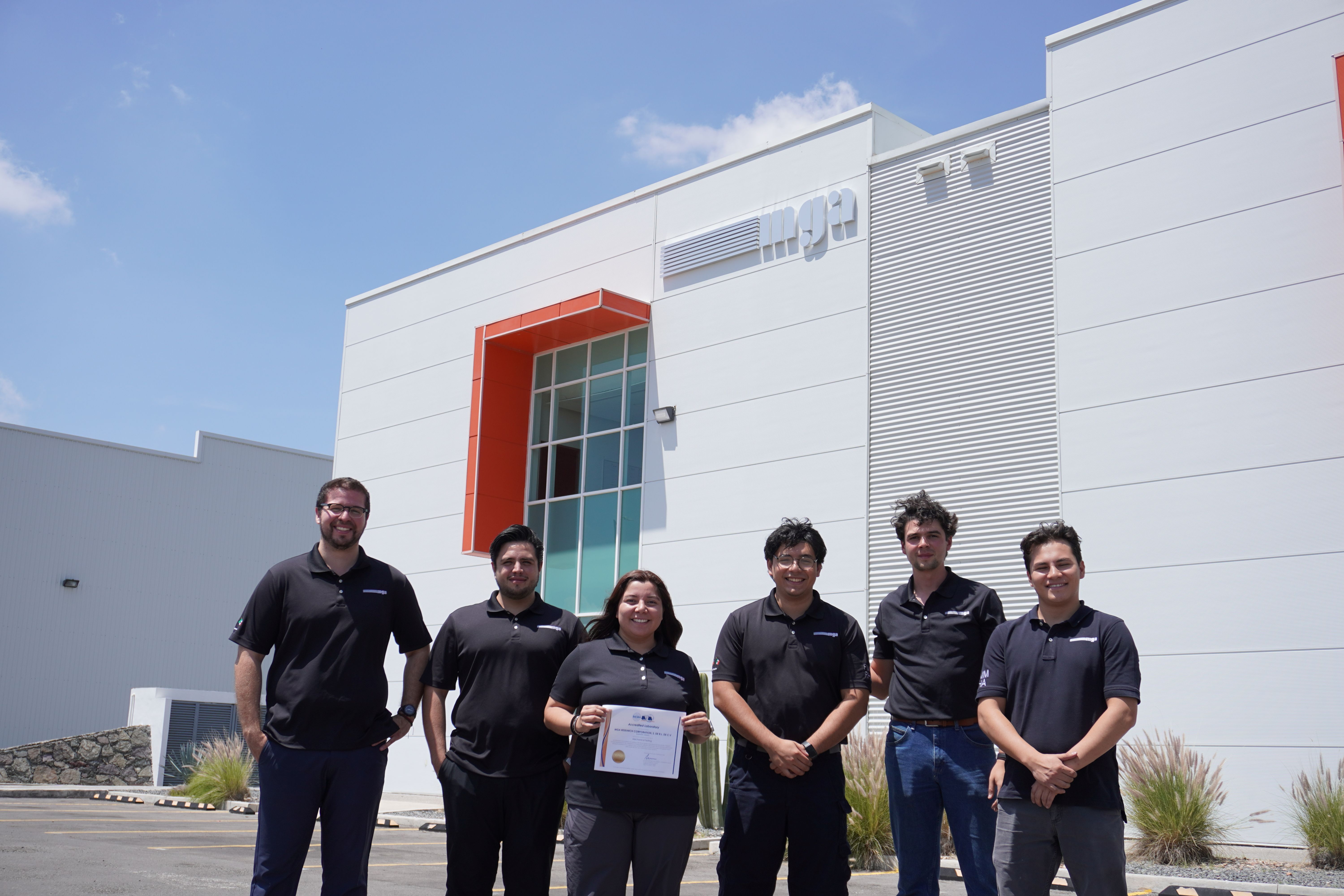
The automotive industry increasingly demands rigorous testing to ensure that vehicle components are durable, reliable, and able to withstand real-world conditions. To help meet this need, MGA Research Corporation has expanded its global presence with a laboratory in Querétaro, Mexico, which serves as a strategic hub for automotive durability and life cycle testing in Latin America and beyond.
Quality vehicle components are critical to OEMs, suppliers, and the driving public. Components that demonstrate high levels of dependability and good functionality reduce warranty costs and improve owner satisfaction. To prevent future problems, it is essential to assess the performance, wear, and behavior of automotive components under realistic usage conditions, accurately replicating the cycles and stresses they will experience throughout their lifespan. This is where durability testing plays a crucial role in evaluating how automotive components perform under prolonged and repetitive use. It helps to identify potential issues such as structural failures, deformations, and loss of functionality while also addressing aesthetic aspects that may affect the quality of the component. These include evaluations such as gap and flush measurements, UV exposure resistance, and ball drop cold impact testing, which help ensure that parts maintain their appearance, alignment, and surface integrity over time.
With our recent expansion in Queretaro, these insights support manufacturers in improving designs, increasing reliability, and ensuring vehicles meet both regional and international quality standards.
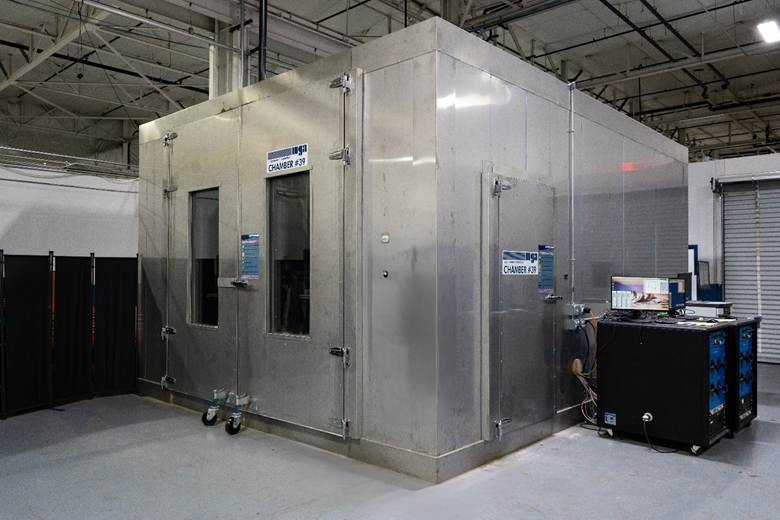
Types of Tests Performed for Automotive Components
Our facility is equipped to carry out various types of evaluations under different temperatures and conditions using our drive-in, walk-in, or reach-in chambers. The following testing types are highlighted below:
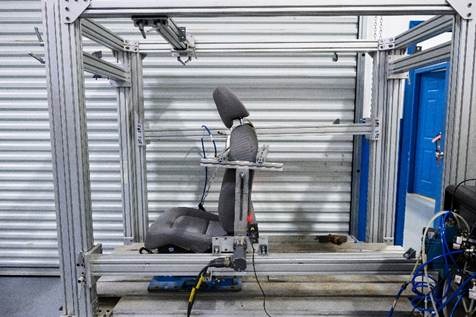
Life Cycle Testing
Objective: Validate the component's resistance to repetitive use throughout its expected lifespan.
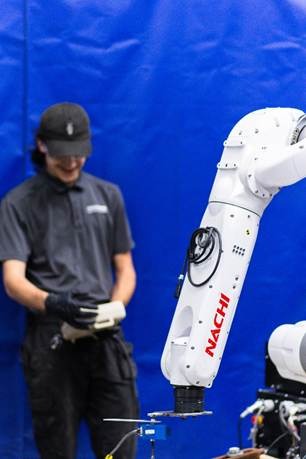
Case Example – Life cycle of rear seats with center armrest:
In this test, the behavior and durability of a rear seat that includes a foldable center armrest are validated. The test consists of executing an automated number of cycles simulating the complete use of the mechanism. Each cycle is composed of the following steps:
- Initial position: Armrest in retracted position.
- Armrest release: A pneumatic cylinder deploys it to its usable position.
- Vertical load application: A second cylinder applies force to the center of the extended armrest, simulating pressure from a user.
- Retraction start: A third cylinder pushes the armrest from the bottom to begin its return.
- Horizontal push: A fourth cylinder pushes it laterally into its fully retracted position.
- Load in retracted position: A new load is applied, now on the already retracted armrest, evaluating structural resistance in this configuration.
This full cycle is repeated a set number of times continuously, using pneumatic cylinders and an automated controller that allows for monitoring without manual intervention. At the end, the component is inspected to detect wear, deformations, functionality loss, or surface damage.
Force vs. Deflection Testing
Objective: Evaluate the structural response of a component when subjected to specific loads, measuring its deformation (deflection) and its ability to maintain structural integrity/functionality.
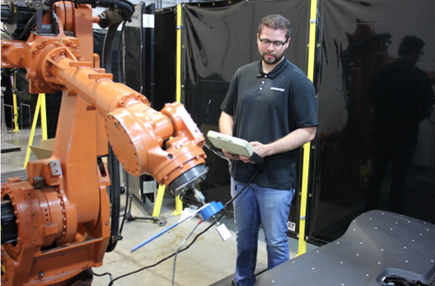
Case Example – Deflection testing on automotive dashboard surfaces:
In this test, the structural response and rigidity of a vehicle dashboard are evaluated by applying controlled loads to specific points of the panel to simulate typical stresses such as support or pressure during use.
Procedure:
- Selection of load points: Critical dashboard zones such as the central console, front area, and compartments are identified, where loads will be applied to replicate real-use conditions.
- Load application: Using KUKA or Nachi industrial robots, precise and controlled forces are applied to each selected point. The applied force is measured in real time using a load cell, ensuring accuracy in the applied magnitude.
- Deflection measurement: Simultaneously, a laser distance sensor continuously monitors the deformation (deflection) of the dashboard at the load point, allowing micrometric displacement recordings to evaluate material and assembly rigidity.
- Final analysis: After releasing the load, the dashboard's return to its original shape is verified, and a visual inspection is conducted to detect permanent deformations, cracks, or related structural noises.
This method ensures that the dashboard maintains its structural integrity, perceived quality, and required durability throughout the vehicle's lifecycle.
Performance Testing
Objective: Evaluate the operational functionality and performance quality of a component or system during continuous use, detecting irregularities such as performance variations, unwanted noises, increased energy consumption, or functional failures that may affect the user experience.
Case Example – Performance testing on manual/mechanical door latch mechanism:
This test evaluates the reliability and stability of the manual/mechanical mechanism responsible for a vehicle door's closure during continuous operation.
Procedure:
- Automated programming: Repetitive opening and closing cycles are configured via a controller, simulating real user usage over a prolonged period.
- Parameter monitoring: The applied force, closing speed, and response time are recorded in real time to detect potential variations or performance losses.
- Inspection upon completion: Once the cycles are completed, a visual and functional review is carried out to detect wear, looseness, failures, or abnormal noises (such as squeaks or knocks) that could compromise future operation.
Advanced Testing Equipment
To carry out these tests, our laboratory in Queretaro is equipped with advanced tools designed to replicate real-use conditions:
- KUKA Robot: Used to simulate human movements such as vehicle ingress/egress, as well as force vs. deflection testing with high precision.
- Nachi Robot: Focused on load and deformation tests, it validates component structural response with reliable repeatability.
- Pneumatic cylinders with PLC controller: Versatile tool for life cycle and performance testing of mechanical components like seats or mobile mechanisms.
- Electric cylinders with PLC controller: Ideal for tests requiring greater electronic control of movement. It can be combined with pneumatic systems for more complex simulations.
Applications
The most commonly evaluated components in this area include:
- Automotive seats (manual and electric) - Tested for repetitive adjustments, occupant ingress and egress, and long-term use of recliners, tracks, and motors. These evaluations simulate years of operation to ensure mechanical integrity, comfort retention, and consistent performance of moving mechanisms.
- Instrument panels (dashboards) - Subjected to vibration, thermal cycling, and material resistance testing to assess how the structure, attachments, and finishes respond to environmental and operational stresses. These tests help identify issues such as warping, cracking, or surface degradation caused by heat and UV exposure.
- Interior and exterior trim components – Including panels, trims, and covers that undergo cyclic loading, impact, and environmental exposure tests. Evaluations such as gap and flush, UV resistance, and ball drop cold impact help verify that these parts maintain both structural integrity and visual quality throughout the vehicle's lifespan.
Each test is designed to replicate the real-use conditions these elements will face in operation, ensuring that products meet end-user expectations and market requirements for performance, safety, and appearance.
Commitment to Quality
MGA Research Corporation is committed to offering reliable, precise, and adaptable services tailored to each customer's needs, ensuring that their products not only work correctly but continue to do so overtime.
With cutting-edge technology and a highly trained technical team, our new facility in Queretaro is ready to become a regional benchmark in automotive durability validation. Explore more of our capabilities here. Ready to start testing? Contact us here.
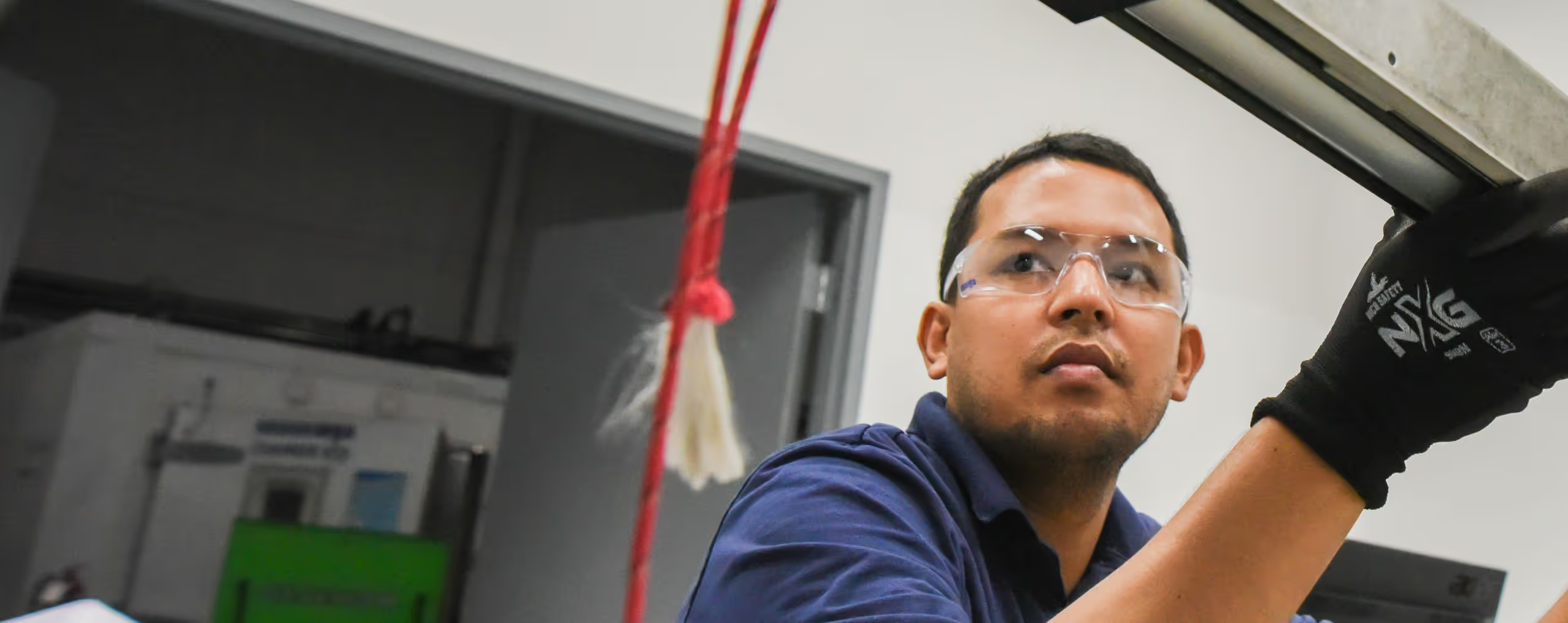
Ready to Get Started?
Let's discuss your testing needs and how MGA can help. Our team is ready to provide the expertise and solutions you're looking for.
